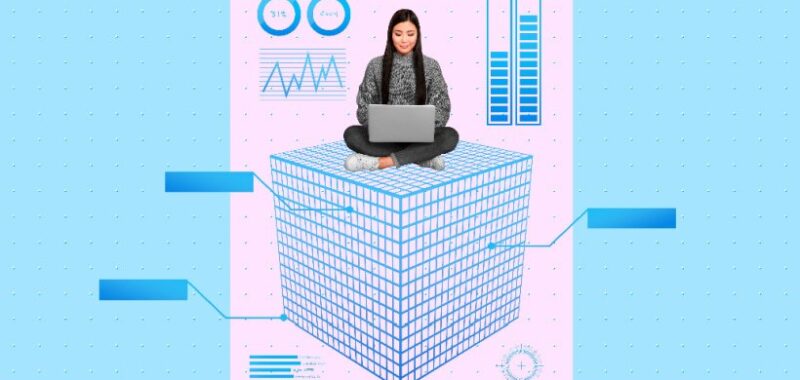Transforming Complexity Into Clarity With Infographics
Traditionally, written text has been the primary means of communication for educational content, but it has its limitations, especially when dealing with intricate concepts. Enter infographics, a very potent, visual medium for simplifying information. This confluence of data, illustrations, and text presented succinctly makes it easy for the masses to understand the material. Infographics can make learning much more interesting, clear, and enjoyable if used effectively.
The Power Of Infographics In Learning
Infographics give learners a dynamic, visual approach to understanding concepts. The human brain processes images 60,000 times faster than text, which is why visuals like graphs, diagrams, and charts can significantly boost comprehension and retention. Thus, infographics create a bridge between dense, written content and visual learners who really struggle with this traditional text-based format.
Key Benefits Of Using Infographics In Learning
1. Showing Complex Information
An infographic breaks complicated ideas into pieces that students may digest easily. Information could be presented clearly in a logical sequence to guide learners through different steps, processes, or hierarchies. For instance, instead of reading a long passage explaining the steps of a scientific experiment, students can look at a flowchart showing each step visually.
2. Engagement And Motivation
Infographics are more engaging than text-heavy lessons. Bright colors, attractive designs, and dynamic visuals attract the learners and keep them motivated. As the learner is visually drawn in, they are less likely to be distracted and more likely to absorb and retain information.
3. Better Information Retention
According to research, visually experienced information is better retained than text. With the use of infographics, this is even truer since most of them contain patterns, colors, and imagery that contribute in some way toward memory improvement. Infographics can create associations that make concepts stick, even after the learner has moved on to other topics.
4. Clarity And Simplicity
Infographics take a lot of information and make it concise into one picture that does not require many words or jargon. They boil complex information down to the essentials, making it easier for learners to know what really matters. For instance, a statistical study that is difficult to understand at a paragraph-based level can easily be explained and visualized via pie charts and bar graphs, making patterns visible.
How To Use Infographics
Infographics are very productive in an online learning environment, especially when learners continuously interact with learning content or material. The use of infographics for online training courses allows for:
- Summary of the most important concepts
After lengthy detailed explanations about a topic, an infographic might be used for visually summarizing the most essential takeaways. - Step-by-step procedures and workflows
Infographics are an excellent way to explain step-by-step procedures, workflows, or processes in areas like programming, science, or business. Flowcharts, timelines, and process diagrams make it easy to break down these processes and understand them better. - Comparison of data and statistics
Bar graphs, pie charts, or any other infographic that compares two or more concepts side by side, help learners detect patterns and relationships in large datasets. - Illustration of relationships and connections
Mind maps or Venn diagrams illustrate how different ideas or concepts interrelate, thus making abstract concepts much more tangible.
Best Practices For Creating Effective Infographics
Not all infographics are equal, and for them to be really effective, they have to be well-designed. Here are some tips to keep in mind when creating infographics for educational content:
1. Simple Is Best
Infographics are meant to simplify, not complicate. Avoid overloading the visual with too much text, too many colors, or complicated illustrations. In short, try to bring out the point in the simplest possible form. Keep minimal words and clear visualizations.
2. Apply Hierarchical Structures
Organize the information in a way that makes sense to the eye and brain. If you are describing a process, organize steps sequentially. If you are comparing information, group similar items together. This hierarchy leads the learner’s eyes through the content naturally.
3. Consistent With Design
A color scheme, typefaces, and iconography help ensure that the design is coherent and professional in nature. Overly flashy designs overshadow content, making the learning process overwhelming. Simplicity in the design yields better focus and understanding.
4. Message Focus
Infographics are supposed to convey an idea. Therefore, it is important that the graphics support the message and not be there as just decoration. The message must be facilitated through all parts of the infographic.
5. Accessibility
Design your infographics to be accessible to all learners, including those with visual impairments. Use high contrast, readable fonts, and alternative text where appropriate. Also, ensure that your infographic can be understood without relying on color alone, for those who are colorblind.
Conclusion
Infographics, indeed, bring a revolution into the world of eLearning. They enable educators to break up complicated ideas, engage learners, and aid memory. Compared to text-only materials, educational infographics render information more accessible, engaging, and digestible to modern-day learners.
Well-designed infographics can be used to design an interactive and visually stimulating learning experience in an online course. This can enhance understanding and support diverse learning styles, and ultimately allow our students to make connections, retain knowledge, and navigate the complexities of the world more easily by tapping into the power of visuals and going beyond text.

HEXALEARN SOLUTIONS PRIVATE LIMITED
ISO certified learning & software solutions company.
Originally published on February 14, 2025

